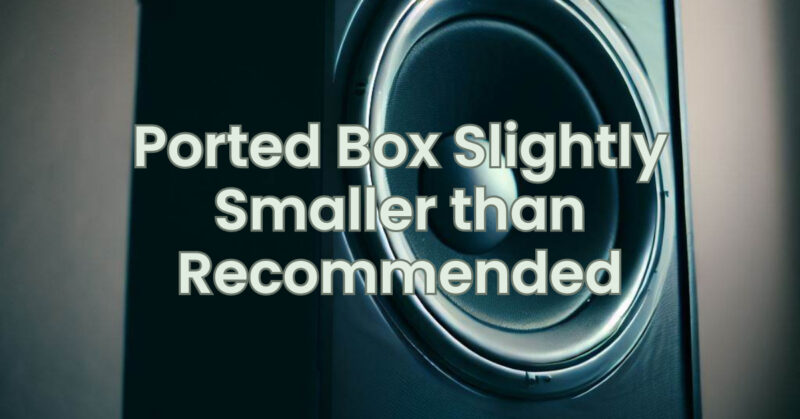When it comes to designing speaker enclosures, following manufacturer recommendations is crucial to achieving optimal sound quality. However, there may be situations where the available space or personal preferences lead to a ported box being slightly smaller than the recommended specifications. In this article, we will explore the implications and considerations of using a ported box that is slightly smaller than the manufacturer’s recommendations.
- Understanding Ported Box Design: A ported (vented) speaker enclosure is specifically designed to enhance low-frequency response by utilizing a tuned port or vent. The port assists in extending the bass response and improving the overall efficiency of the speaker system.
- Impact of a Slightly Smaller Ported Box: a. Altered Tuning Frequency:
- Shift in Tuning Frequency: A smaller box size will alter the tuning frequency of the ported box. The tuning frequency refers to the frequency at which the port resonates and enhances the bass response. A slightly smaller box can result in a higher tuning frequency, potentially affecting the low-frequency performance.
b. Changes in Bass Response:
- Reduced Low-Frequency Extension: A smaller ported box may have reduced low-frequency extension compared to the manufacturer’s recommendations. This can result in a loss of deep bass response and impact the overall fullness and depth of the audio reproduction.
- Altered Bass Characteristic: The smaller box size may lead to a change in the bass characteristic, potentially resulting in a different tonal balance and sound signature. The bass may be less pronounced or have a different emphasis compared to the intended design.
- Considerations for Using a Smaller Ported Box: a. Speaker Driver Considerations:
- Compatibility with Speaker Driver: It is important to ensure that the speaker driver is still suitable for the slightly smaller box. Consider the driver’s parameters, power handling capabilities, and excursion limits to avoid potential distortion or damage.
- Re-Evaluating Power Requirements: The altered box size may affect the power requirements of the speaker system. A smaller box may require less power to reach desired sound levels, so adjustments to the amplifier settings might be necessary.
b. Room Acoustics and Listening Environment:
- Room Size and Acoustic Considerations: The size of the room and its acoustic properties play a significant role in the perceived sound. A smaller ported box might interact differently with the room acoustics, potentially impacting the overall sound quality. Experimentation and careful listening tests in the specific room environment are recommended.
c. Trade-Offs and Personal Preferences:
- Balancing Size Constraints and Performance: In situations where space limitations or aesthetic preferences necessitate a slightly smaller ported box, it becomes a trade-off between ideal performance and practical constraints. It is important to assess the compromises and decide whether the resulting sound quality is acceptable based on personal preferences.
Using a ported box that is slightly smaller than the recommended specifications can have implications for the tuning frequency, bass response, and overall sound quality. The altered box size may result in changes to the low-frequency extension and bass characteristic, affecting the fullness and tonal balance of the audio reproduction. Considerations should be given to speaker driver compatibility, power requirements, room acoustics, and personal preferences when using a slightly smaller ported box. Experimentation and critical listening tests can help determine the acceptability of the resulting sound quality.


